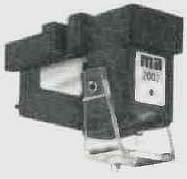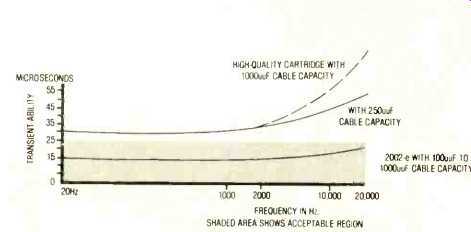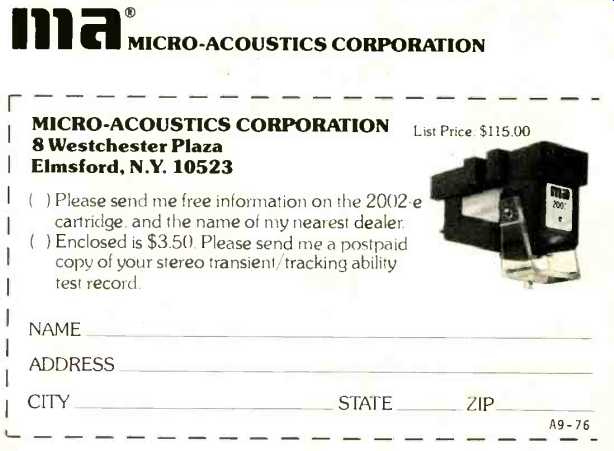Because good tracking isn't enough.
Tracking is just the beginning.

While good tracking ability is vital, it's only an indication of how well the stylus keeps contact with record grooves on louder, harder-to-follow passages, at stylus pressures low enough to minimize wear. But surprisingly, tracking ability tells almost nothing about how well a cartridge reproduces most musical sounds.
Transient ability is just as important.
After all, transients are what music is made of: sudden start-and-stop bursts of sound at all frequencies. From the attack of a low organ note to the bite of a plucked string.
Transient information is essential to differentiate the sound of one instrument from another, and in stereo, to localize instruments in space. That's why, without good transient ability, no cartridge can reproduce music with really lifelike clarity.
Until now, it was simply one or the other.
Tracking or transient ability. Popular high-compliance cartridges, on the one hand, offered good tracking ability and low record/stylus wear, but sacrificed transient ability. And low-compliance cartridges provided good transient ability at the expense of tracking ability and increased wear.
A new technology.
Micro-Acoustics, the world's leading manufacturer of record-mastering styli, has combined for the first time superb transient and tracking ability. In the radical design of the 2002-e (patent pending), direct-coupled electrets and critical damping provide optimized transient ability as shown in the graph.
While an ultra-low-mass beryllium stylus bar and high-compliance dual-bearing suspension provide maximum tracking ability at 1 gram, for lowest possible record and stylus wear.

SHADED AREA SHOWS ACCEPTABLE REGION: Transient ability best
defines how accurately a cartridge can reproduce a musical burst at different
frequencies. (Note that the 2002-e's results are independent of cable capacity!)
-------------
A simple way to convince yourself.
Micro-Acoustics has prepared a unique demonstration record to help you evaluate and compare cartridge transient and tracking ability. Just send $3.50, and we'll mail you a record postpaid. For free information and the name of your nearest dealer, just complete and return the coupon.
-----------

1. Low mass body (4.0 grams) reduces warp flutter.
2. pure gold connecting wires.
3. mechanical damper (one of 8) helps optimize transient and tracking ability.
4. retainer spring for precise stylus assembly alignment.
5. elliptical diamond stylus ground with the same precision as our famous Micro-Point recording styli.
6. beryllium stylus bar 35% lower mass than aluminum; for optimum high-frequency tracking and transient ability.
7. dual bearings and resolver for optimum tracking ability and precise signal resolution.
8. direct coupling of stylus bar to electret for lossless transmission of groove undulations to transducers.
9. user-replaceable stylus assembly.
10. electret transducer permanently-polarized dielectric generator, linear from 5Hz-50kHz.
11. microcircuit passive circuit makes cartridge output impedance fully resistive, eliminating effect of cable capacity: shunts preamp input.: reducing thermal noise.
MICRO-ACOUSTICS CORPORATION -- 8 Westchester Plaza Elmsford, N.Y. 10523

ma
Micro-Acoustics--Because good tracking isn’t enough.
Micro-Acoustics Corporation, 8 Westchester Plaza, Elmsford NY 10523, USA. (914) 592-7627
(adapted from Audio magazine, Sept. 1976)
Also see:
Micro-Acoustics 282e phono cartridges (Sept. 1979)
Micro-Acoustics phono cartridges (Sept. 1977)
= = = =